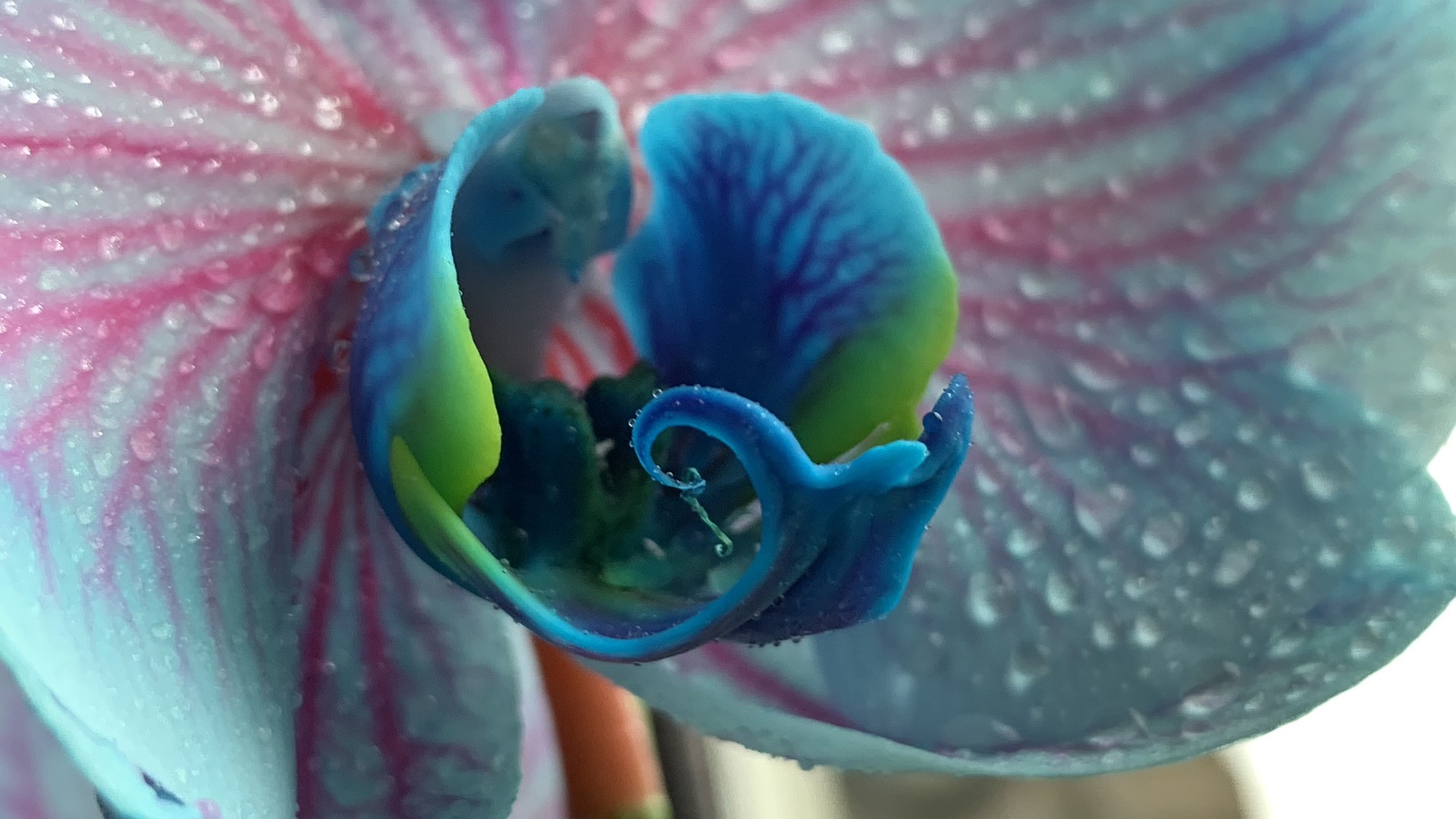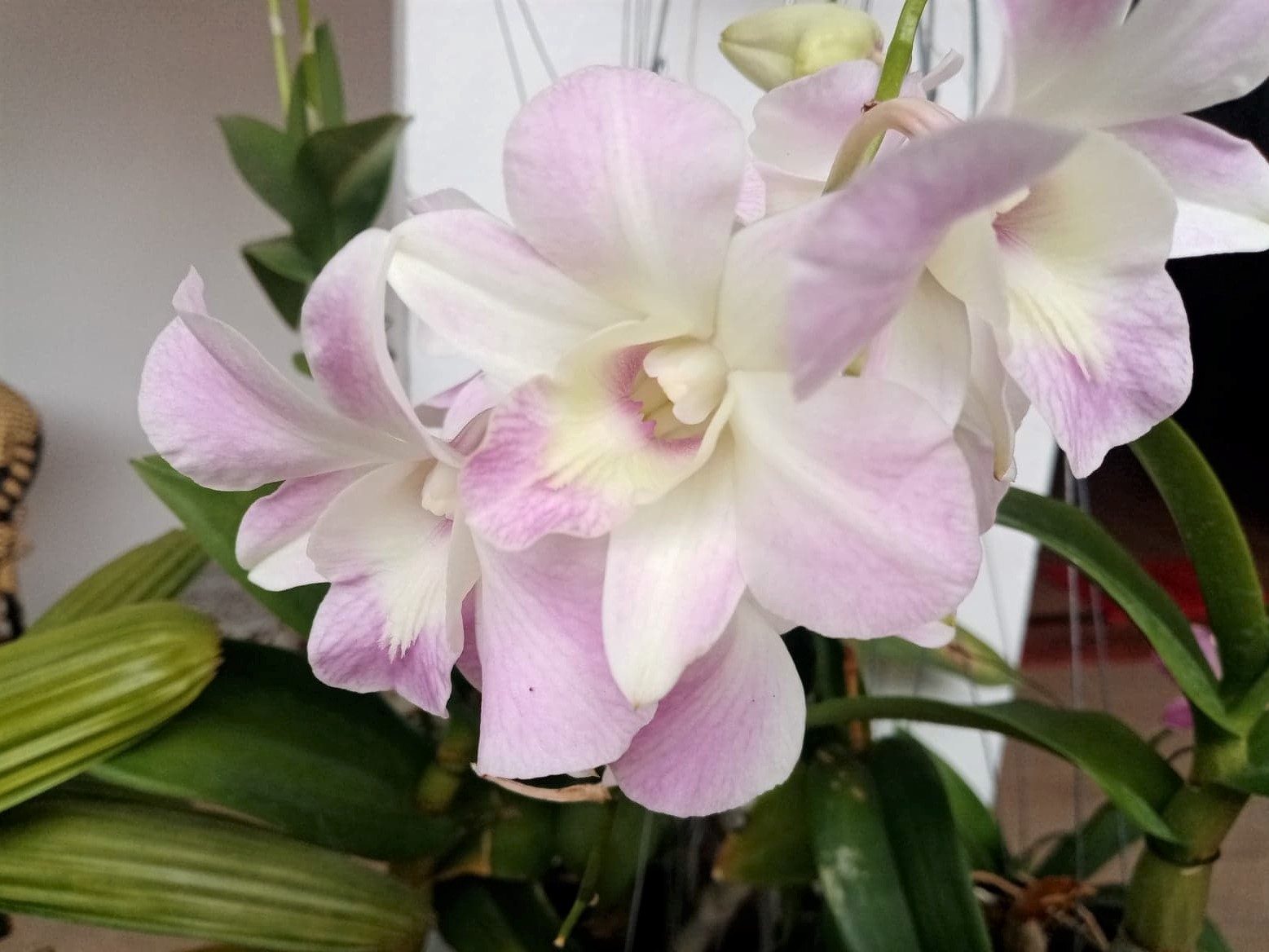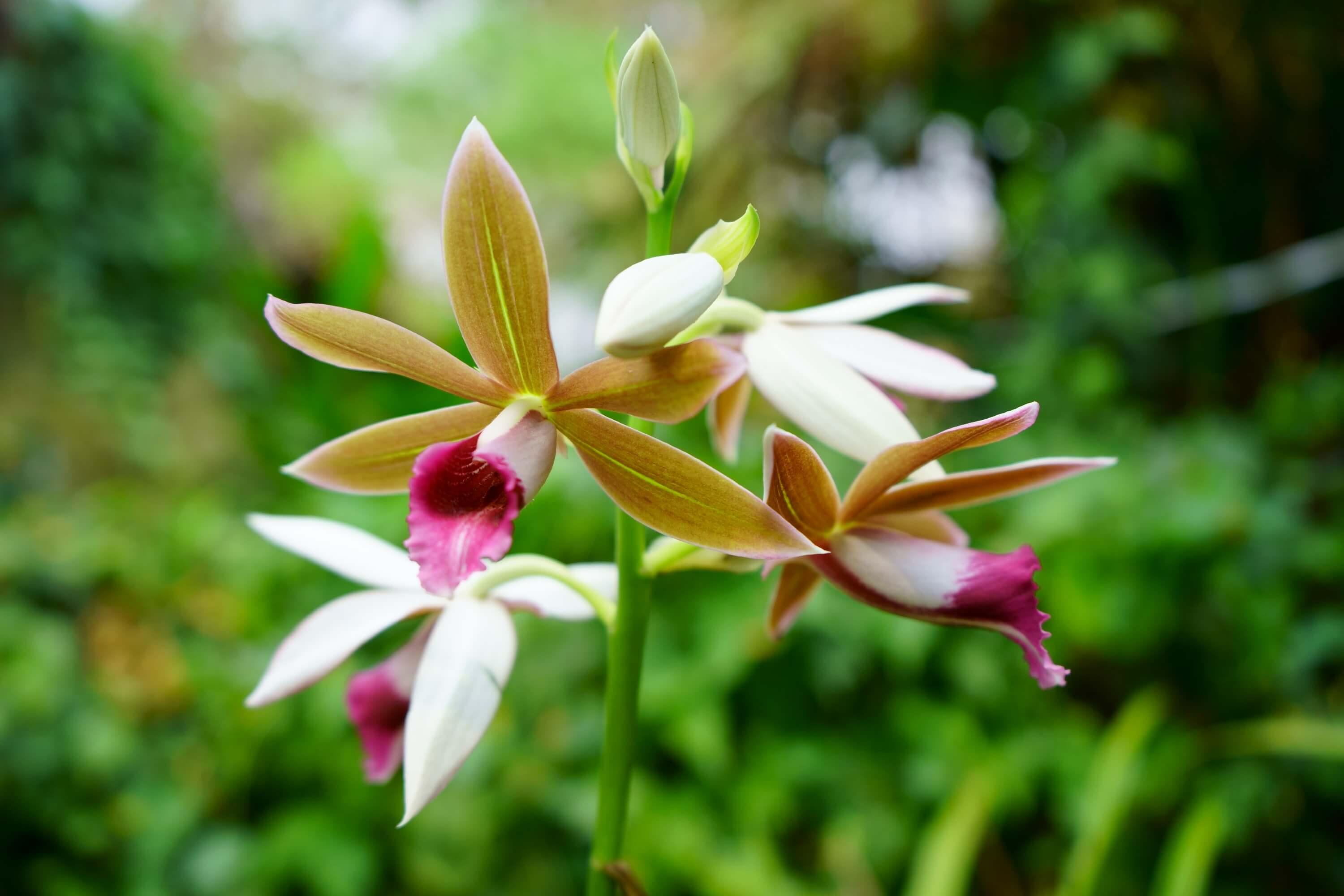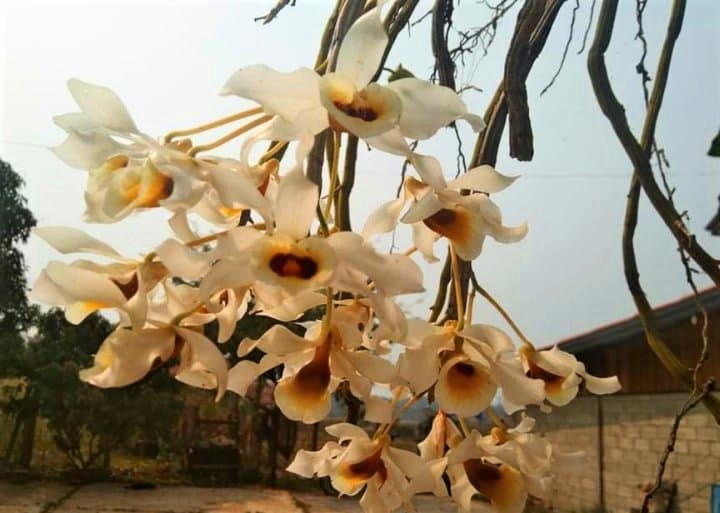Butterfly Orchid Care
In this article, we will discuss everything you need to know about butterfly orchid care, including the best type of growing medium, light and temperature requirements, watering and fertilizing needs, and common pests and diseases. Encyclia orchids, also known as the butterfly orchid, are a diverse group of orchids native to Central and South America, Mexico, and the Caribbean. With their exotic and delicate flowers resembling a butterfly, encyclia orchids are a favorite among orchid enthusiasts and collectors.
Encyclia are epiphytic orchids (also known as air orchids) and have specific growing requirements that are different from most houseplants. Like most orchids, they require a growing medium that is well-draining, airy, and provides good aeration for the roots. In their natural habitat, encyclia orchids grow on trees, so their roots are exposed to the air, and water and nutrients are absorbed from animal droppings, the air and rain.
Growing Medium
In cultivation, encyclia orchids are usually grown in a mix of bark, perlite, sphagnum moss, or sometimes LECA (Lightweight Expanded Clay Aggregate). These materials ensure good butterfly orchid care by providing drainage, aeration, and moisture retention, which are essential for the plant's health.
Bark is the most commonly used growing medium for encyclia orchids. It is made of small, coarse pieces of tree bark, which allows for good air circulation around the roots. Bark comes in different sizes and grades, and the size of the bark used depends on the the plant. Small bark tends to hold more moisture and has slightly less aeration and is generally used with smaller plants or young orchids that need more moisture retention.
Perlite is a lightweight, white, volcanic mineral that is sometimes used to improve drainage. It is added to the growing medium to increase the air space between the particles, which allows for better water and nutrient absorption.
Sphagnum moss is a natural material that is used to retain moisture in the growing medium. It is added to orchid mix formulations to help hold water around the roots and prevent them from drying out. However, it is important not to use too much sphagnum moss, as it can hold too much water and lead to root rot.
LECA is a type of expanded clay that is used to improve the drainage and aeration of the growing medium. It is made by heating clay in a kiln, which causes it to expand and become porous. LECA is lightweight, inert, and provides good drainage and aeration for the roots. LECA is often used in self-watering semi hydroponic watering systems.
When choosing a growing medium for your butterfly orchid care, it's essential to select one that provides good drainage and aeration for the roots. A mix of bark, perlite, and sphagnum moss, or LECA on its own is an excellent choice, but the proportions used may vary depending on the specific needs of your plant.
Butterfly Orchid Care Watering
In addition to the growing medium, proper watering and fertilization is necessary for proper butterfly orchid care. Watering orchids is a tricky subject to cover as there is not one solution for all orchids, and the topic of watering usually also means fertilizing at the same time. In general a good rule of thumb is to water/fertilize weakly, weekly, in other words to use a weak solution of fertilizer. Some orchids require more frequent waterings, check for the recommendations for your particular orchids when you purchase it. Epiphytic orchids typically grow in trees with their roots exposed to the air, so they are not adapted to being wet all the time, so overwatering your orchids can lead to root rot, which is a common problem for novice orchid growers. To prevent this, it's important to use the proper growing medium and to let it dry out slightly between waterings.
When fertilizing encyclia orchids, it's important to use a fertilizer formulated specifically for your particular orchid species. The best fertilizer for orchids depends on a variety of factors, including the type of orchid, the growing medium, the environmental conditions, and the growth stage of the orchid. When orchids are flowering it is best to typically use a fertilizing formula that is low in nitrogen and high in phosphorus and potassium, which are essential for flower production. After flowering, you can switch to a more balanced formula.
When watering your encyclia orchid, use room-temperature water and avoid getting any water on the leaves or blooms. Water the plant thoroughly, allowing the water to drain out of the bottom of the pot. Empty the saucer of any excess water to prevent the roots from sitting in water, which can lead to root rot.
Light and Temperature Requirements
Encyclia orchids are epiphytic orchids, meaning that they do not grow in soil, rather they grow on other plants, usually trees, using their roots as an anchor and to harvest rainwater, and moisture from the air. They are adapted to bright, indirect light and prefer a warm and humid environment. Encyclia orchids thrive in temperatures between 70 and 90 degrees Fahrenheit during the day and 55 to 70 degrees Fahrenheit at night. Avoid exposing them to drastic temperature changes, such as cold drafty windows or doors, as this can stress the plant and cause it to drop its blooms or leaves.
Repotting and Pruning
Encyclia orchids should be repotted every one to two years to refresh the potting mix and prevent the roots from becoming crowded. The best time to repot an encyclia orchid is in the spring, just after it has finished blooming. If necessary, choose a pot that is slightly larger than the current one if the roots look like they are crowded, and use a well-draining orchid mix.
For good butterfly orchid care, water thoroughly two days before repotting so that the roots are flexible and supple to avoid damaging them. When repotting, gently remove the orchid from its current pot and carefully loosen the roots. Trim any dead or damaged roots, and repot the plant in the new pot, filling in with fresh potting mix. Water the plant thoroughly and avoid fertilizing for the first month to allow the roots to settle in.
Encyclia orchids benefit from occasional pruning. If the blooms have faded, snip the stem just above the second or third node from the bottom. This will encourage the plant to produce new blooms. If any leaves are yellow or wilted, remove them at the base of the stem.
Pests and Diseases
Encyclia orchids are relatively easy to care for, but they can be susceptible to pests and diseases if not properly cared for. To prevent these problems, it's essential to provide your plant with the proper growing conditions and to monitor it regularly for any signs of trouble.
Spider Mites
These tiny insects can cause discoloration and webbing on the plant. Use a miticide to treat the plant, and increase the humidity around it to discourage further infestations.
Scale Insects
These insects can appear as small, round, brown bumps on the leaves or stems of the plant. Use a cotton swab dipped in rubbing alcohol to remove them, or use an insecticide labeled for scale insects.
Crown Rot
This fungal disease can occur if the plant is overwatered or the potting mix is too heavy. Symptoms include a soft, mushy crown and wilting leaves. Remove any orchids that are affected with crown rot which typically means death for your orchid.
Encyclia orchids are a beautiful and exotic addition to any home or greenhouse. With the right growing medium, proper watering and fertilization, and careful monitoring for pests and diseases, your encyclia orchid will thrive and reward you with stunningly beautiful blooms year after year.



